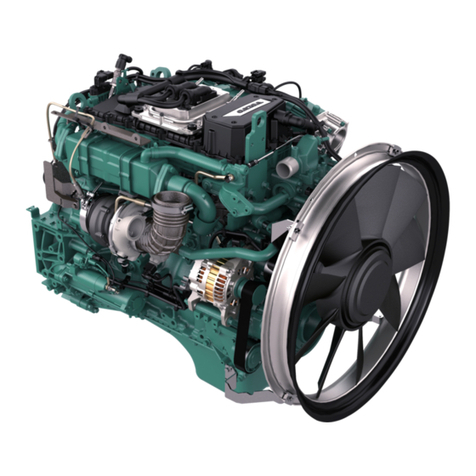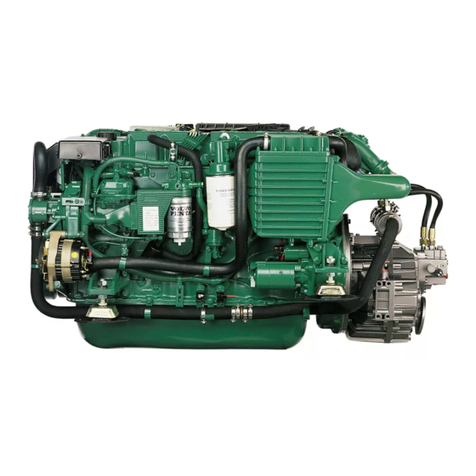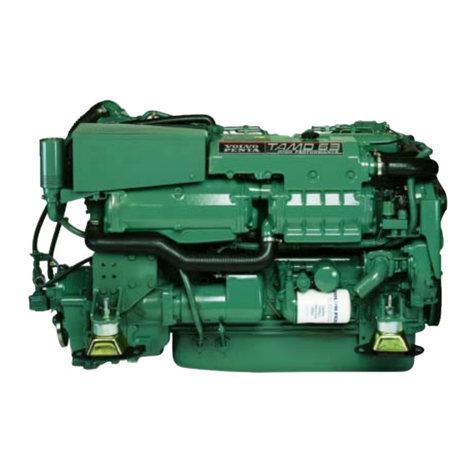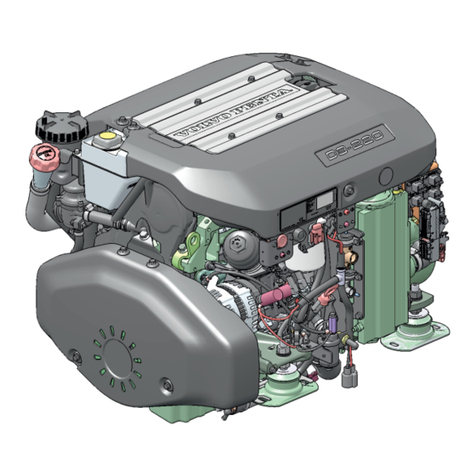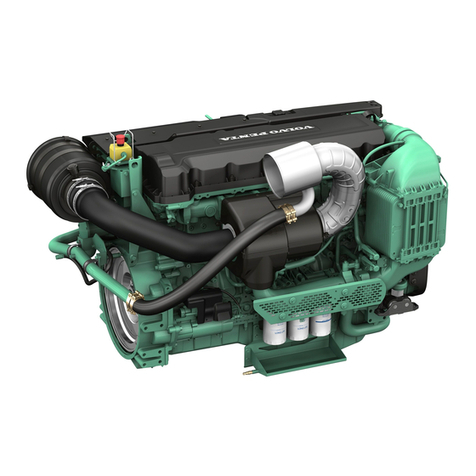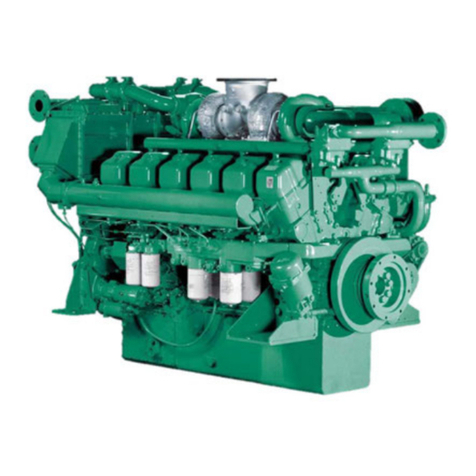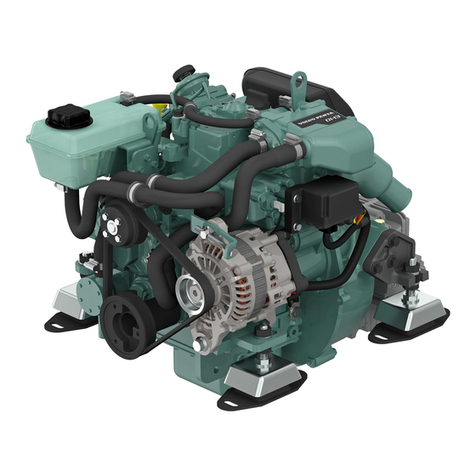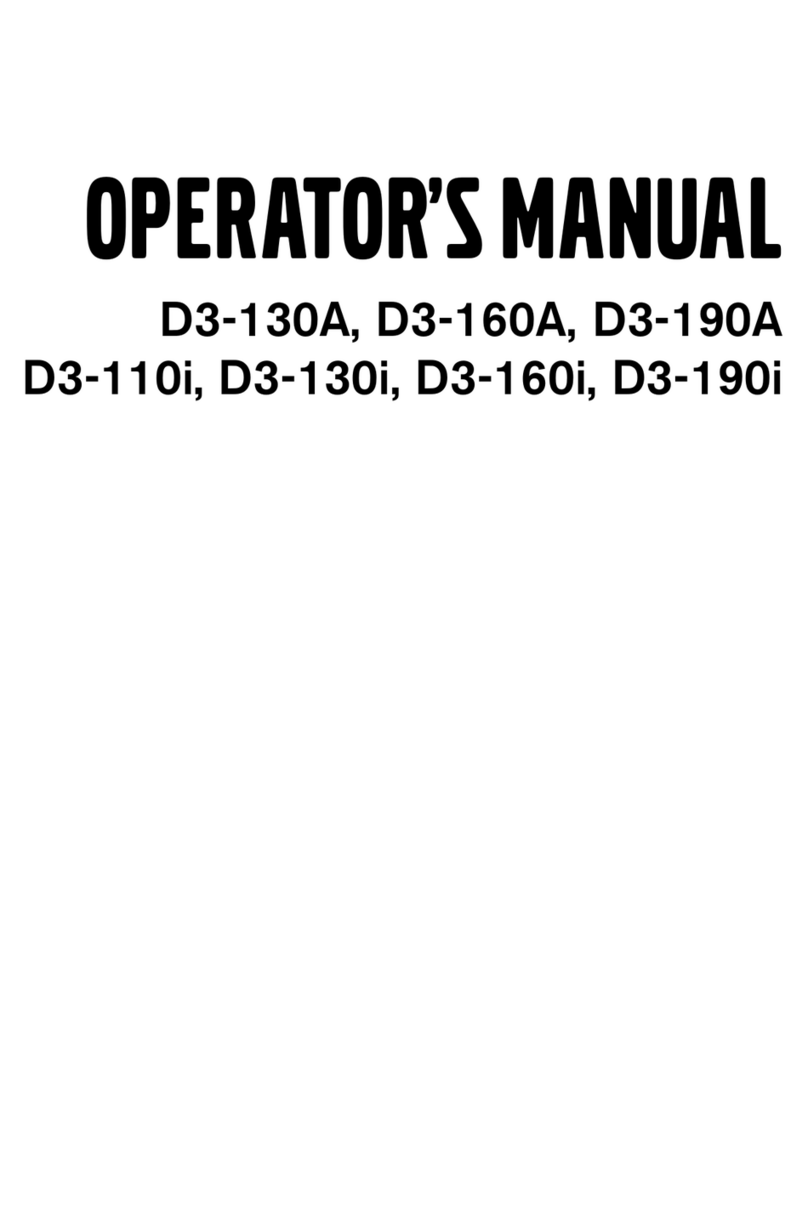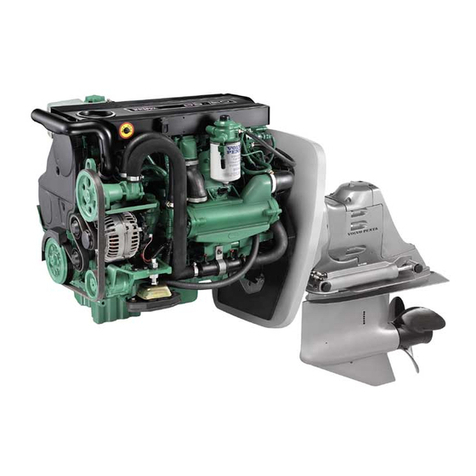
RUNNING THE UNIT
GENERAL INSTRUCTIONS
FUEL AND LUBRICATING OIL RECOMMENDATIONS
NOTE. Our guarantee only applies on condition that the following fuel and
I u bricating oi I recommendations are f ol lowed :
Fuel quality
The engine is intended to be run on petrol with an octane rating of minimum B0
ROT (Research Method).
Lubricating oil quality
Only Multigrade oil SAE 1O W30 with quality designation "For Service SE"1) is to
be used for lubricating the engine and reverse gear. This oil contains additives which
ensure maximum lifetime for the engine and reverse gear under different conditions
of operations.
RUNNING.IN
When your marine engine is new, we recommend that you run it with a certain
amount of care during the first 20 hours of operation. During this time, never
subject the engine to full loading for more than brief periods, because it is during
this period that the moving parts wear in together.
Oil changes
During the running-in period, the engine and reverse gear lubricating oilshould be
changed more frequently than usual. Change the engine oil, reverse gear oil and the
oil filter after 20 hours of operation, see also under "Servicing", points 3 and 4.
RECOMMENDED ENGINE SPEED
lf your are to get the very best performance from your boat, it is important that
the propeller is selected so that maximum engine speed is reached with a normally
loaded boat. See under "Technical Data".
NOTE. When the boat has been in the water for some considerable time, maximum
engine speed can decrease if there is marine growth on the bottom of the boat. Use
therefore anti-fouling bottom paint. Check and clean the bottom of the boat at
regular intervals.
1) Previous designation "For Service MS".
4
RUNNING THE UNIT
Precautions to be taken in case of frost
lf there is risk of frost, drain off the cooling water to prevent cracks in the engine
block and reduction gear caused by the water freezing. Note the risk of water
getting into the boat. See also under the heading "Procedure to be followed when
laying up a boat" (Page22).
RUNNING
Procedu re bef ore starting
1 . Make sure that the engine compartment is well ventilated'
2. check the lubricating oil levels in the engine and reverse gear, see under
"Servicing", points 1 and 2.
3. Check the fuel level in the tank and open the cock for fuel supply to the
engine- At the same time, check all fuel cocks, pipelines and screw unions for
leakage.
4. Check that the drain cock for the cooling water is closed. Note. The drain plug
for the reduction gear. See Fig. 22. Open the bottom cock for the cooling
water intake (if one is fitted).
5. Switch on the master switch for the electrrcal system (if one is fitted) and
pump out any bilge water that may have collected.
6. Make sure that the equipment on board includes a fire extinguisher, life vests,
anchor, mooring lines and other safety equipment.
Starting
1. Move the control lever to the neutral position so that the shift mechanism
disengages. See the directions given in Fig. 4. Push forward the speed control
to approx. 1/4 throttle. lf the engine is cold, the choke must be completely
closed. The choke should not be used when starting a warm engine.
2. Turn the key switch one step to the right. Check that the warning lamps for
battery charging and low oil pressure light up.
3. Press in the key switch and turn it further to the right, this cutting in the
starter-generator. Release the key as soon as the engine starts. Never race a cold
engine.
4. lf the battery is so flat that it is difficult to start the engine, the engine can be
started with the help of the starting crank (available as accessory).
5. Check immediately after starting that the warning lamps for oil pressure and
battery charging have gone out. Should the red oil warning lamp remain on -
stop the engine immediatelY.
6. Check the cooling water circulation by observing that the water is being
discharged overboard. Run the engine warm at fast idling RPM. Do not let the
engine run with the choke more than several minutes and never when the
engine is completely warm.
1. Move the control lever to neutral in order to engage the shift mechanlsm (see
Fig. 4). The boat is now ready for operation.
